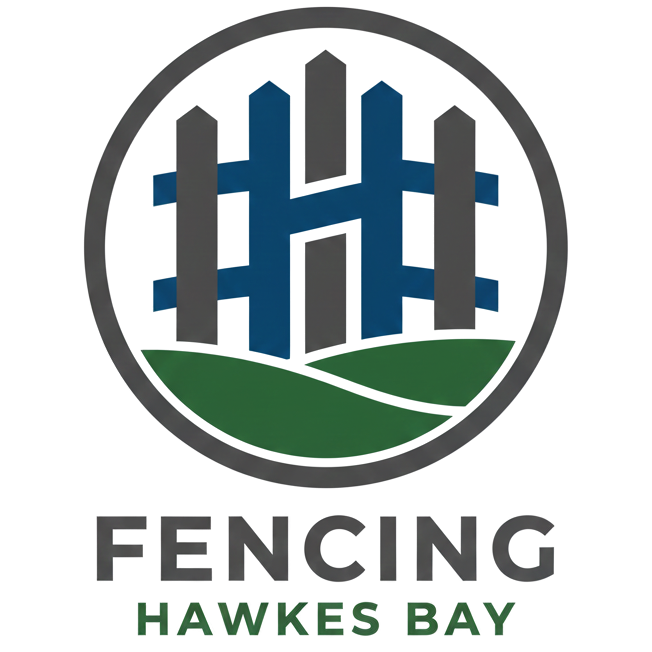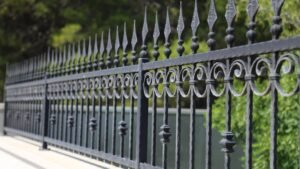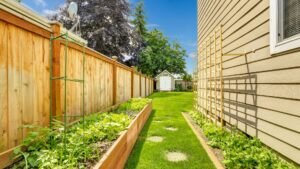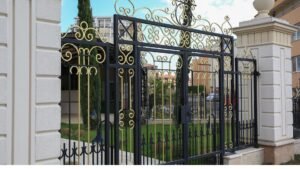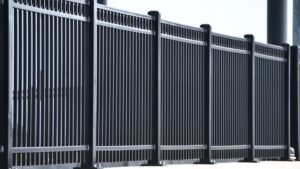Welcome to the ultimate guide on choosing between timber and composite decking in New Zealand! As outdoor living spaces become increasingly popular among Kiwi homeowners, the decision on which decking material to use is crucial for creating a beautiful, functional, and long-lasting deck. In this blog post, we will explore the key differences between timber and composite decking, examining their pros and cons, cost implications, environmental impact, and aesthetic considerations. By the end, you’ll have a clear understanding of which option best suits your needs, lifestyle, and budget, ensuring your deck becomes a cherished part of your home for years to come.
Timber decking offers natural beauty and a variety of options like Kwila, Pine, and Macrocarpa, but requires regular maintenance and can be susceptible to the elements. Composite decking, made from a blend of wood fibers and plastic, is low-maintenance, durable, and resistant to rot and pests, though it comes with a higher initial cost and a less natural appearance. Choosing between them depends on your aesthetic preference, maintenance willingness, budget, and environmental values.
Table of Contents
Overview Of Decking Options In New Zealand
Brief History of Decking
Decking has a rich history in New Zealand, tracing back to when timber was the primary material used. Early settlers utilized native woods like Rimu, Totara, and Kauri, known for their durability and beauty. As New Zealand’s architecture evolved, so did the decking options. In the mid-20th century, exotic hardwoods like Kwila and imported pine became popular due to their availability and resilience. Over the past few decades, the decking industry has seen significant innovation, with the introduction of composite materials and advanced treated timbers, providing homeowners with a plethora of choices tailored to different needs and preferences.
Importance of Choosing the Right Decking Material
Selecting the appropriate decking material is crucial for several reasons. Firstly, aesthetics play a major role in enhancing the visual appeal of your outdoor space. A well-chosen decking material can complement your home’s design and landscape, creating a cohesive and inviting environment.
Secondly, maintenance is a key consideration. Different materials require varying levels of upkeep. For instance, natural timber may need regular staining and sealing to maintain its appearance and longevity, while composite decking typically requires less maintenance, saving you time and effort in the long run.
Lastly, the choice of decking material can significantly impact the value of your property. High-quality materials that are well-maintained can boost your home’s market appeal, making it more attractive to potential buyers. On the other hand, inferior or poorly maintained decking can detract from your property’s overall value.
In summary, understanding the history and evolution of decking materials in New Zealand, coupled with a careful selection based on aesthetics, maintenance needs, and property value, can lead to a more satisfying and rewarding outdoor living experience.

Timber Decking
When it comes to creating a stunning outdoor space in New Zealand, timber decking remains a popular choice for many homeowners. This classic option provides a natural beauty that blends seamlessly with the environment, offering an inviting and warm aesthetic. Here’s a comprehensive look at timber decking, covering the types available, the advantages it offers, and some potential drawbacks.
Types of Timber Decking in NZ
New Zealand boasts a variety of timber options for decking, each with its own unique characteristics. Here are three common types:
Kwila
Kwila, also known as Merbau, is a durable hardwood prized for its rich reddish-brown color. It is known for its strength and longevity, making it an excellent choice for decking that can withstand the elements. Over time, Kwila develops a beautiful silvery patina, adding to its appeal.
Pine
Pine is a more affordable and widely available option in New Zealand. Treated pine decking is resistant to decay and insect damage, making it a practical choice for many homeowners. It is versatile and can be stained or painted to match any design preference.
Macrocarpa
Macrocarpa, a cypress species, is another popular timber for decking. It offers a distinctive look with its golden hue and attractive grain patterns. Macrocarpa is naturally resistant to decay and pests, and it ages gracefully, maintaining its aesthetic charm over the years.
Pros of Timber Decking
Opting for timber decking comes with several benefits:
Natural Beauty
Timber decking exudes an authentic, timeless appeal that synthetic materials often struggle to replicate. The natural grain and texture of wood create a warm and inviting outdoor space, perfect for relaxation and entertaining.
Variety
With timber decking, homeowners have a wide array of choices regarding wood types and finishes. Whether you prefer the deep, rich tones of Kwila or the lighter, rustic look of Macrocarpa, there’s a timber to suit every style. Different stains and sealants can further customize the appearance to fit your specific aesthetic.
Eco-Friendly Options
Many timber decking options come from sustainable forestry practices, making them an eco-friendly choice. When sourced responsibly, timber is a renewable resource that contributes to environmental conservation efforts. Look for certifications like FSC (Forest Stewardship Council) to ensure your decking wood is sustainably harvested.
Cons of Timber Decking
Despite its many advantages, timber decking does have some drawbacks to consider:
Maintenance Requirements
One of the most significant downsides of timber decking is the maintenance involved. To keep it looking its best, timber decks require regular staining, sealing, and occasional repairs. This upkeep is necessary to protect the wood from moisture, UV rays, and general wear and tear.
Susceptibility to Elements
Timber is naturally susceptible to the elements, which can lead to issues like rot, warping, and pest infestations if not properly maintained. Over time, exposure to rain, sun, and temperature fluctuations can affect the integrity and appearance of the deck.
Cost
The initial cost of timber decking can be higher compared to some other materials, especially for premium hardwoods like Kwila. Additionally, the ongoing maintenance costs, including stains, sealants, and potential repairs, should be factored into your budget.
Timber decking offers a beautiful, natural addition to any outdoor space, with a range of types to suit various tastes and budgets. While it does require regular maintenance and comes with some susceptibility to the elements, its aesthetic appeal and eco-friendly potential make it a worthwhile investment for many New Zealand homeowners. Whether you choose Kwila, Pine, or Macrocarpa, timber decking can provide a timeless, inviting space for relaxation and enjoyment.

Composite Decking
Composite decking is a popular alternative to traditional timber decking. It’s known for its durability, low maintenance requirements, and consistent appearance, making it a preferred choice for many homeowners in New Zealand.
What is Composite Decking?
Composite decking is a man-made building product that includes a mix of recycled wood fibers and plastic. It offers the look of wood without the extensive upkeep. This innovative blend results in a durable, versatile, and aesthetically pleasing decking option.
Materials Used
The primary materials used in composite decking are wood fibers and plastic. These wood fibers can come from various sources, including sawdust, wood chips, and wood scraps, which are then combined with plastic resins. The plastic used is often recycled, contributing to the eco-friendliness of composite decking. The combination of these materials creates a product that mimics the appearance of natural wood while offering enhanced durability.
Manufacturing Process
The manufacturing process of composite decking involves several steps. First, the wood fibers and plastic are mixed together and heated to form a thick paste. This mixture is then extruded into the desired shape, typically in the form of long planks. The extruded planks are cooled and cut to length. Some manufacturers add a protective outer layer, known as a cap, to enhance the decking’s resistance to staining and fading. The final product is a sturdy, low-maintenance decking option that can withstand the elements better than traditional wood.
Pros of Composite Decking
Composite decking comes with numerous advantages, making it an attractive option for homeowners looking for a long-lasting and easy-to-care-for decking solution.
Low Maintenance
One of the biggest benefits of composite decking is its low maintenance requirements. Unlike timber, which requires regular sanding, staining, and sealing, composite decking only needs occasional cleaning with soap and water to keep it looking its best. This saves time, effort, and money over the lifespan of the deck.
Durability
Composite decking is highly durable. It is resistant to common issues that affect timber, such as rot, warping, and pest infestations. The plastic component in the decking helps it withstand harsh weather conditions, making it less likely to crack or splinter. This durability ensures that the decking will last for many years with minimal upkeep.
Consistency
Composite decking offers a uniform look and color. Each plank is manufactured to be consistent in size, shape, and color, providing a clean, cohesive appearance for your deck. This uniformity is especially beneficial for large projects where maintaining a consistent look is important.
Cons of Composite Decking
Despite its many benefits, composite decking also has some drawbacks that should be considered before making a decision.
Cost
The initial cost of composite decking is higher than that of traditional timber. The advanced manufacturing process and high-quality materials contribute to this higher price. However, it’s important to consider the long-term savings in maintenance and replacement costs when evaluating the overall value of composite decking.
Appearance
While composite decking is designed to mimic the look of wood, it may not have the same natural appearance as real timber. Some homeowners prefer the authentic look and feel of natural wood, which can be a drawback for those seeking a more traditional aesthetic.
Heat Retention
Composite decking can retain more heat than timber, making it hotter to walk on in direct sunlight. This can be a consideration for decks that are exposed to full sun for most of the day. Choosing lighter-colored decking can help mitigate this issue to some extent, as lighter colors tend to absorb less heat.
In summary, composite decking is an excellent choice for those seeking a low-maintenance, durable, and visually appealing decking option. While it may have a higher upfront cost and different aesthetic qualities compared to timber, its long-term benefits often outweigh these considerations.
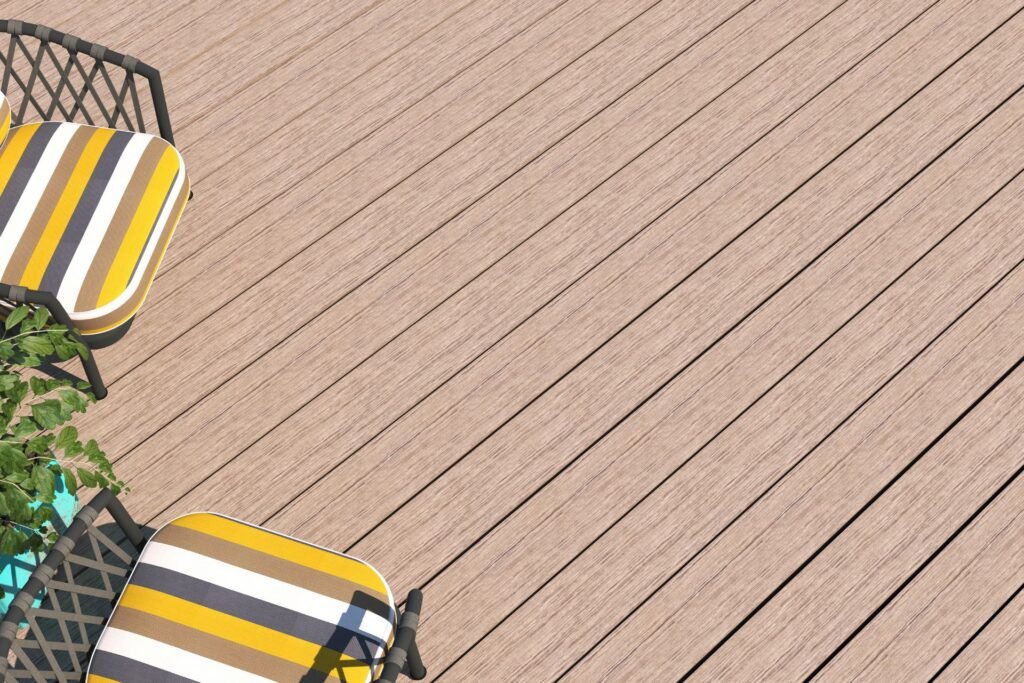
Cost Comparison
When considering decking options in New Zealand, cost is a crucial factor. Both timber and composite decking have distinct financial implications that can influence your decision. Let’s delve into a comprehensive cost comparison, focusing on initial and long-term costs for both materials.
Initial Costs
Timber
Timber decking offers a range of prices depending on the type of wood you choose. Here are some common options:
Pine: This is the most affordable timber option, with prices typically ranging from $50 to $100 per square meter.
Kwila: A popular choice for its durability and rich color, Kwila decking costs around $120 to $150 per square meter.
Jarrah and other hardwoods: These premium timbers can range from $150 to $200 per square meter or more, offering superior aesthetics and longevity.
The initial cost of timber decking can vary significantly based on the wood type, but it’s generally more budget-friendly than composite materials at the outset.
Composite
Composite decking materials come with a higher upfront cost. Prices typically range from $150 to $300 per square meter. This higher initial outlay reflects the advanced manufacturing processes and the inclusion of recycled materials, making composite decking an eco-friendly choice. The price difference compared to timber is justified by the long-term benefits and lower maintenance requirements of composite decking.
Long-Term Costs
Timber
While timber decking might seem more affordable initially, it’s important to consider the ongoing costs associated with maintenance and replacement. Timber requires regular upkeep to maintain its appearance and structural integrity. Here are some common expenses:
Staining and sealing: To protect against weathering and UV damage, timber decks need to be stained and sealed annually. This can cost between $15 to $30 per square meter each year.
Repairs and replacements: Over time, timber can suffer from rot, splintering, and insect damage, necessitating repairs or replacement of planks. These costs can add up, especially if significant sections of the deck need attention.
Considering these ongoing expenses, the long-term costs of timber decking can surpass the initial savings, making it a more expensive option over its lifespan.
Composite
Composite decking offers a contrasting financial picture with lower long-term costs despite the higher initial investment. Here’s why:
Minimal maintenance: Composite decks are resistant to rot, splintering, and insect damage, eliminating the need for annual staining or sealing. A simple wash with soapy water is usually sufficient to keep it looking new.
Longevity: Composite decking is designed to last longer than most timber options, often coming with warranties of 25 years or more. This durability means fewer repairs and replacements over time.
The lower maintenance and replacement costs make composite decking a more economical choice in the long run, even though the initial investment is higher.
When comparing the costs of timber and composite decking, it’s essential to consider both the immediate expenses and the long-term financial implications. Timber may be more affordable upfront, but its higher maintenance and potential replacement costs can add up over time. Composite decking, with its higher initial price, offers significant savings on upkeep and boasts a longer lifespan, making it a cost-effective option in the long term. Your choice should balance your budget with how much time and effort you’re willing to invest in maintenance, as well as the aesthetic and environmental considerations of each material.

Environmental Impact
When selecting decking materials for your outdoor project, considering the environmental impact is crucial. This section delves into the sustainability and environmental considerations of both timber and composite decking options.
Sustainability of Timber
Timber, a natural and renewable resource, is often touted for its eco-friendliness. However, not all timber is created equal in terms of sustainability. Here’s what you need to know:
Certified Sustainable Timber
When opting for timber decking, choosing certified sustainable timber is essential. The Forest Stewardship Council (FSC) certification is a key indicator that the wood comes from responsibly managed forests. FSC-certified timber ensures that the forests are preserved for future generations, biodiversity is protected, and the rights of indigenous people are respected. By selecting FSC-certified timber, you contribute to sustainable forest management and help combat illegal logging practices.
Environmental Footprint
The environmental footprint of timber involves several factors, including harvesting and transportation. Sustainable timber harvesting minimizes ecological disruption by adopting practices like selective logging and maintaining forest health. However, it’s important to consider the transportation aspect. Timber sourced from distant locations has a higher carbon footprint due to transportation emissions. To reduce this impact, opt for locally sourced timber when possible. Locally sourced timber not only supports local economies but also reduces the carbon footprint associated with long-distance transportation.
Environmental Considerations for Composite
Composite decking is often marketed as a green alternative to traditional timber. This section explores the environmental benefits of composite materials:
Recycled Materials
One of the primary environmental benefits of composite decking is its use of recycled materials. Composite decking typically combines recycled plastics with wood fibers, reducing the need for virgin plastic production and wood harvesting. By repurposing materials that would otherwise end up in landfills, composite decking helps reduce waste and conserve natural resources. This use of recycled content can significantly lower the overall environmental impact of decking projects.
Longevity and Waste Reduction
Composite decking boasts impressive longevity, often outlasting traditional timber by several years. This extended lifespan means fewer replacements are needed over time, leading to less material waste. Traditional timber decks may require replacement or significant maintenance every 10-15 years, whereas composite decking can last 25-30 years with minimal upkeep. The durability of composite materials reduces the frequency of replacement, ultimately decreasing the demand for new resources and the environmental impact associated with manufacturing and installation.
Choosing between timber and composite decking involves weighing the environmental impacts of each material. Certified sustainable timber offers a renewable and eco-friendly option, particularly when locally sourced. On the other hand, composite decking utilizes recycled materials and boasts superior longevity, contributing to waste reduction. By understanding the environmental implications of your decking choice, you can make an informed decision that aligns with your sustainability goals and promotes a healthier planet.
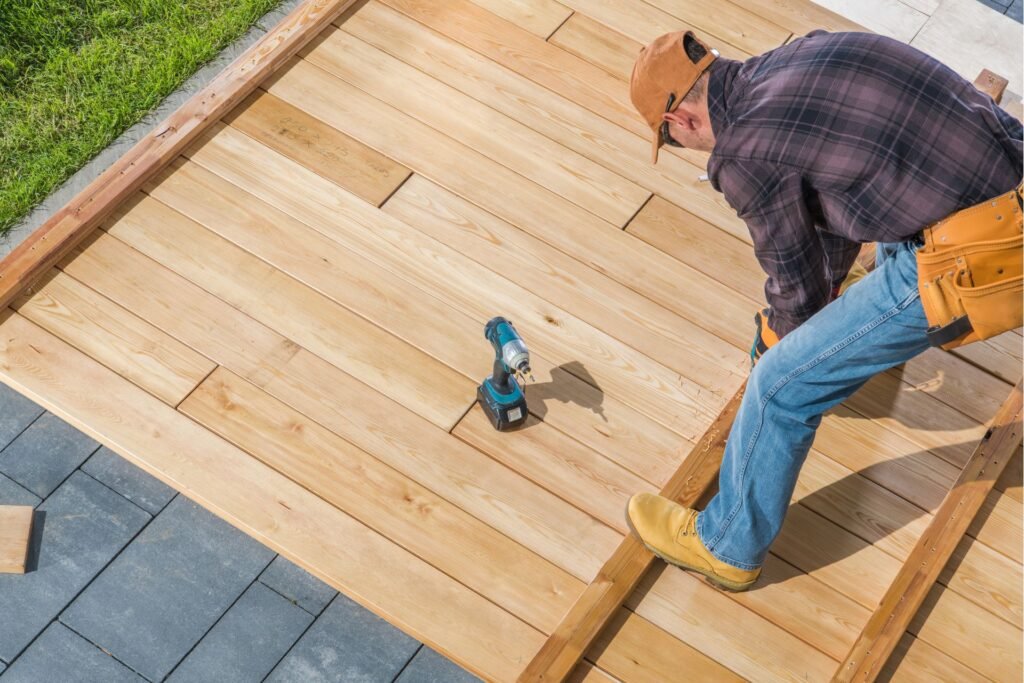
Aesthetic Considerations
When choosing the best decking material for your outdoor space in New Zealand, aesthetics play a crucial role. The look and feel of your deck can significantly impact the overall ambiance of your home. Here, we will explore the aesthetic considerations of two popular decking options: timber and composite decking.
Natural Look of Timber
Grain Patterns and Color Variation
One of the primary reasons many homeowners in New Zealand opt for timber decking is its natural beauty. Timber offers a unique aesthetic appeal that synthetic materials often struggle to replicate. The grain patterns in the timber are distinctive, with no two pieces of wood looking exactly alike. This natural variation adds character and charm to your deck, making it a truly unique feature of your home.
Timber decking also boasts a wide range of color variations, from the warm, rich tones of Kwila to the lighter, more subdued hues of Pine. These natural colors can enhance the visual appeal of your outdoor space, blending seamlessly with the surrounding environment. Over time, timber can age gracefully, developing a weathered look that many find appealing.
Customization: Staining and Finishing Options
Another advantage of timber decking is the ability to customize its appearance. Timber can be stained or finished in various ways to achieve the desired look. Whether you prefer a clear finish that highlights the natural grain or a colored stain that complements your home’s exterior, the options are plentiful. This flexibility allows homeowners to create a deck that perfectly matches their style and preferences.
Staining and finishing not only enhance the aesthetic appeal of timber but also protect it from the elements. Properly maintained, a timber deck can retain its beauty for many years, adding value and curb appeal to your property.
Appearance of Composite Decking
Variety of Designs: Different Colors and Textures Available
Composite decking has come a long way in terms of aesthetics. Modern composite materials are available in a wide variety of colors and textures, designed to mimic the look of natural wood. Whether you prefer the classic appearance of cedar or the sleek look of grey, composite decking offers an array of options to suit any style.
The consistent appearance of composite decking is one of its major selling points. Unlike timber, composite boards are manufactured to be uniform in color and texture, providing a more polished and cohesive look for your deck. This consistency can be especially appealing for those who want a clean, modern aesthetic without the variability found in natural wood.
Fading and Staining: How Composite Holds Up Over Time
While composite decking is known for its low maintenance, it is essential to consider how it holds up over time. High-quality composite materials are engineered to resist fading and staining, maintaining their appearance for years with minimal upkeep. However, not all composite decking is created equal, and some lower-end products may fade or stain more easily.
When selecting composite decking, it’s crucial to choose a reputable brand known for durability and longevity. Premium composite decks are designed to withstand the harsh New Zealand climate, ensuring that your deck remains beautiful and functional with little effort.
In conclusion, both timber and composite decking offer distinct aesthetic benefits. Timber provides a natural, unique look with the ability to customize through staining and finishing. Composite decking, on the other hand, offers a wide variety of designs and a consistent appearance that resists fading and staining. Understanding these aesthetic considerations will help you make an informed decision, ensuring that your new deck not only meets your functional needs but also enhances the beauty of your outdoor space.

Maintenance And Longevity
Maintaining your deck is crucial for its longevity and appearance, and different materials have distinct maintenance needs. Here’s a closer look at what you can expect when it comes to maintaining timber and composite decking.
Timber Maintenance Needs
Timber decking, while beautiful and natural, requires a fair amount of upkeep to keep it looking its best and to extend its lifespan. Here’s a detailed breakdown of what to expect:
Routine Tasks: Timber decks need regular maintenance to stay in good shape. This includes cleaning, staining, and sealing. Cleaning should be done at least once a year to remove dirt, mold, and mildew. This usually involves scrubbing the surface with a brush and a mild detergent. Staining helps to preserve the wood’s natural color and protect it from UV damage. Sealing the deck helps to prevent water penetration, which can lead to rot and warping.
Repair Needs: Over time, timber decks can suffer from various issues that need to be addressed promptly. Wood is prone to rot, especially if it has not been properly sealed or if water is allowed to pool on the surface. Rot can weaken the structure of the deck and should be repaired immediately. Splinters can also develop, which can be a hazard, particularly if you walk barefoot on your deck. Warping is another common issue with timber, caused by exposure to moisture and temperature changes. Regular inspection and timely repairs can help to keep your deck safe and looking good.
Composite Maintenance Requirements
Composite decking, made from a blend of wood fibers and plastic, offers a lower-maintenance alternative to traditional timber. Here’s what you need to know about caring for composite decks:
Simple Cleaning: One of the main advantages of composite decking is its low maintenance. Unlike timber, composite decks do not require regular staining or sealing. Cleaning a composite deck is straightforward and can be done with soap and water. For more stubborn stains, a mild household cleaner and a soft brush can be used. It’s generally recommended to clean your composite deck once or twice a year, depending on the amount of dirt and debris it accumulates.
Durability: Composite decks are known for their durability and long lifespan. They are resistant to many of the issues that plague timber decks, such as rot, splinters, and warping. Most composite decking products come with a warranty that can range from 10 to 25 years, giving homeowners peace of mind about their investment. The longevity of composite decking means that, although it may have a higher upfront cost compared to timber, it can be more cost-effective in the long run due to reduced maintenance and replacement costs.
In summary, the choice between timber and composite decking often comes down to personal preference and willingness to commit to maintenance. Timber decks offer a natural, classic look but require more upkeep to keep them in good condition. Composite decks, on the other hand, provide a hassle-free option with excellent durability, making them a popular choice for those looking for a long-lasting and low-maintenance solution.

Safety Considerations
Slip Resistance
Timber
When considering the safety of your decking, slip resistance is a key factor. Timber decks, while beautiful and natural, have a tendency to become quite slippery when wet. This can be a significant concern, especially in regions with frequent rain or in areas around pools and hot tubs. Wet timber can lead to dangerous slips and falls, posing a risk to family members and guests. To mitigate this, it’s essential to regularly clean your timber deck to remove moss, mold, and algae, which can exacerbate slipperiness. Additionally, applying anti-slip treatments or using slip-resistant timber can help improve safety.
Composite
On the other hand, composite decking is designed with safety in mind. Many composite deck boards come with built-in slip-resistant surfaces, making them a safer option for wet conditions. This feature is particularly beneficial in high-traffic areas and homes with children or elderly residents. The enhanced grip of composite decking provides peace of mind, ensuring that your outdoor spaces remain safe to walk on, even after a downpour. This makes composite decking a practical choice for those prioritizing safety without compromising on aesthetic appeal.
Splinters and Surface Damage
Timber
Timber decks, although charming, are prone to splinters and surface damage over time. Regular use and exposure to the elements can cause the wood to crack, warp, or develop splinters. This can be particularly problematic for barefoot enthusiasts, children playing on the deck, or pets. Splinters can cause injuries, and damaged surfaces can detract from the overall look and feel of your outdoor space. To prevent these issues, it’s important to conduct routine maintenance, such as sanding down rough areas, sealing the wood, and repairing any damage promptly. This ongoing upkeep is essential to keep your timber deck safe and looking its best.
Composite
Composite decking, in contrast, offers a smooth, splinter-free surface that remains intact even with heavy use. The materials used in composite decking are engineered to resist cracking, warping, and splintering, providing a more durable and safer surface. This makes composite decking an excellent choice for families, as it minimizes the risk of injuries from splinters and requires less maintenance than timber. The low-maintenance nature of composite decking means you can spend more time enjoying your deck and less time worrying about repairs and upkeep.
When it comes to safety considerations for decking, both timber and composite have their pros and cons. Timber requires more maintenance to ensure safety, especially in terms of slip resistance and splinter prevention. Composite decking, with its slip-resistant surfaces and splinter-free construction, offers a safer and more hassle-free alternative. By carefully weighing these factors, you can choose the decking material that best suits your needs, ensuring a safe and enjoyable outdoor space for years to come.
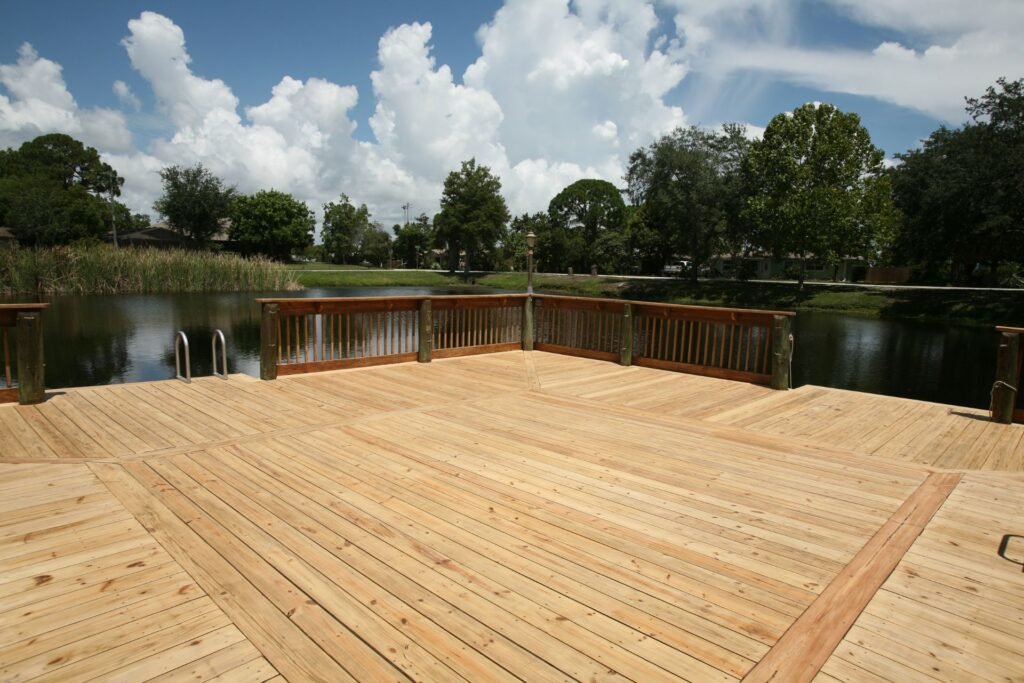
Making The Right Choice For Your Home
When it comes to selecting the perfect decking for your home, the decision-making process is influenced by several key factors. Understanding these factors can help you make an informed choice that aligns with your personal preferences, lifestyle, budget, and environmental values.
Personal Preferences and Lifestyle
Aesthetic Preferences: Natural vs. Uniform Look
Your decking is an extension of your living space, so it’s essential to choose a style that complements your home’s architecture and your personal taste. If you love the timeless beauty of natural wood, you might prefer timber decking. Timber offers a unique, organic look with varied grain patterns and colors that add character and warmth to your outdoor area. On the other hand, if you favor a sleek, modern appearance, composite decking could be the way to go. Composite decking provides a uniform look with consistent color and texture, giving your deck a clean and polished finish.
Maintenance Willingness: Time and Effort for Upkeep
Consider how much time and effort you’re willing to invest in maintaining your deck. Timber decking requires regular maintenance, including cleaning, sanding, and staining, to preserve its beauty and durability. This upkeep can be time-consuming but is often a labor of love for those who appreciate the natural aesthetic of wood. In contrast, composite decking is designed to be low-maintenance. It resists fading, staining, and scratching, and typically only requires occasional cleaning with soap and water, making it an attractive option for those with busy lifestyles or who prefer a hassle-free deck.
Budget Considerations
Initial Investment vs. Long-Term Costs
Budget plays a crucial role in your decking decision. It’s important to weigh the initial investment against the long-term costs associated with maintenance and durability. Timber decking often has a lower upfront cost compared to composite decking. However, the ongoing maintenance expenses for timber, including the cost of sealants, stains, and potential repairs, can add up over time. Composite decking, while more expensive initially, tends to have lower long-term costs due to its durability and minimal maintenance requirements. By evaluating both the short-term and long-term financial implications, you can choose a decking material that fits your budget and offers the best value over time.
Environmental Values
Sustainability Preferences: Choosing Eco-Friendly Options
If environmental sustainability is important to you, consider the ecological impact of your decking choice. Timber decking, especially when sourced from responsibly managed forests, can be a sustainable option. Look for certifications such as FSC (Forest Stewardship Council) to ensure the wood is harvested in an environmentally friendly manner. Composite decking, made from a blend of recycled wood fibers and plastic, is another eco-friendly choice. It reduces the demand for virgin wood and repurposes waste materials, contributing to environmental conservation. Additionally, some composite decking brands are committed to sustainable manufacturing practices, further enhancing their green credentials.
By carefully considering these factors—your aesthetic and maintenance preferences, budget constraints, and environmental values—you can make a well-rounded decision that enhances your home and aligns with your lifestyle and values. Your decking should not only look great but also serve as a functional, enjoyable space for years to come.
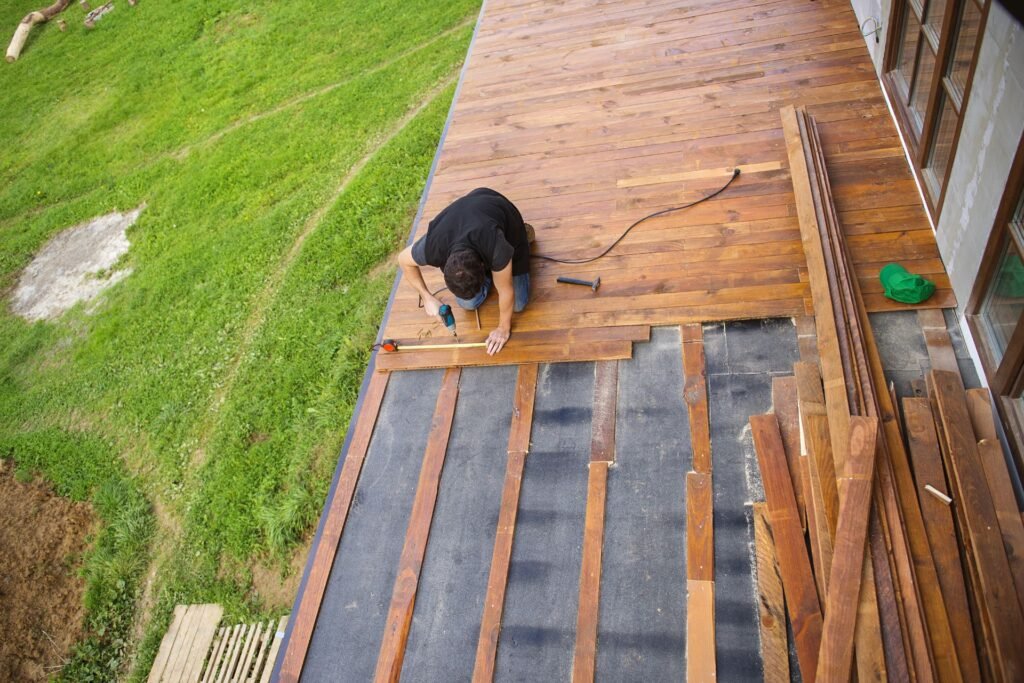
FAQs: About Timber Vs Composite Decking NZ
What are the main differences between timber and composite decking?
Timber decking is made from natural wood and offers an authentic look with unique grain patterns, while composite decking is made from a blend of wood fibers and plastic, providing a more uniform appearance and requiring less maintenance.
Which types of timber are commonly used for decking in New Zealand?
Common types of timber used for decking in New Zealand include Kwila, Pine, and Macrocarpa. Each type has its own characteristics in terms of appearance, durability, and maintenance needs.
What are the pros and cons of timber decking?
Pros of timber decking include its natural beauty, variety of options, and eco-friendly choices. Cons include the need for regular maintenance, susceptibility to rot and pests, and potentially higher long-term costs.
What are the pros and cons of composite decking?
Pros of composite decking include low maintenance, durability, resistance to rot and pests, and consistent appearance. Cons include a higher initial cost, less natural look, and potential heat retention in direct sunlight.
How do the costs of timber and composite decking compare?
Timber decking generally has a lower initial cost but higher long-term maintenance costs. Composite decking has a higher upfront cost but lower maintenance expenses over time.
Which decking material is more environmentally friendly?
Both timber and composite decking can be environmentally friendly. Sustainable timber options come from certified sources, while composite decking often uses recycled materials and has a longer lifespan, reducing waste.
How does the maintenance of timber decking compare to composite decking?
Timber decking requires regular cleaning, staining, and sealing to prevent damage from the elements. Composite decking needs minimal maintenance, typically just occasional washing with soap and water.
Can composite decking look as good as timber decking?
Composite decking can closely mimic the look of natural wood with a variety of colors and textures available. However, it may not achieve the same authentic grain patterns and variations found in real timber.
Is composite decking safe in all weather conditions?
Composite decking is generally slip-resistant and splinter-free, making it safe for use in various weather conditions. However, it can become hotter than timber decking when exposed to direct sunlight.
Which decking material is better for my home in New Zealand?
The best decking material depends on your personal preferences, lifestyle, budget, and environmental values. Consider factors like the desired look, willingness to perform maintenance, and long-term cost implications when making your decision.
Conclusion
In conclusion, it’s essential to weigh the pros and cons of both timber and composite decking when deciding on the best option for your outdoor space. Timber decking offers a natural, classic look with a warm, inviting feel, but it requires regular maintenance and can be susceptible to weather damage. On the other hand, composite decking is low-maintenance, durable, and resistant to the elements, though it may lack the authentic appearance of real wood. Ultimately, your choice should reflect your personal preferences, budget, and how much time you’re willing to invest in upkeep. We encourage you to consider these factors carefully and explore further resources or consult a decking professional to make the most informed decision for your home.
About the Author:
Mike Veail is a recognized digital marketing expert with over 6 years of experience in helping tradespeople and small businesses thrive online. A former quantity surveyor, Mike combines deep industry knowledge with hands-on expertise in SEO and Google Ads. His marketing strategies are tailored to the specific needs of the trades sector, helping businesses increase visibility and generate more leads through proven, ethical methods.
Mike has successfully partnered with numerous companies, establishing a track record of delivering measurable results. His work has been featured across various platforms that showcase his expertise in lead generation and online marketing for the trades sector.
Learn more about Mike's experience and services at https://theleadguy.online or follow him on social media:
